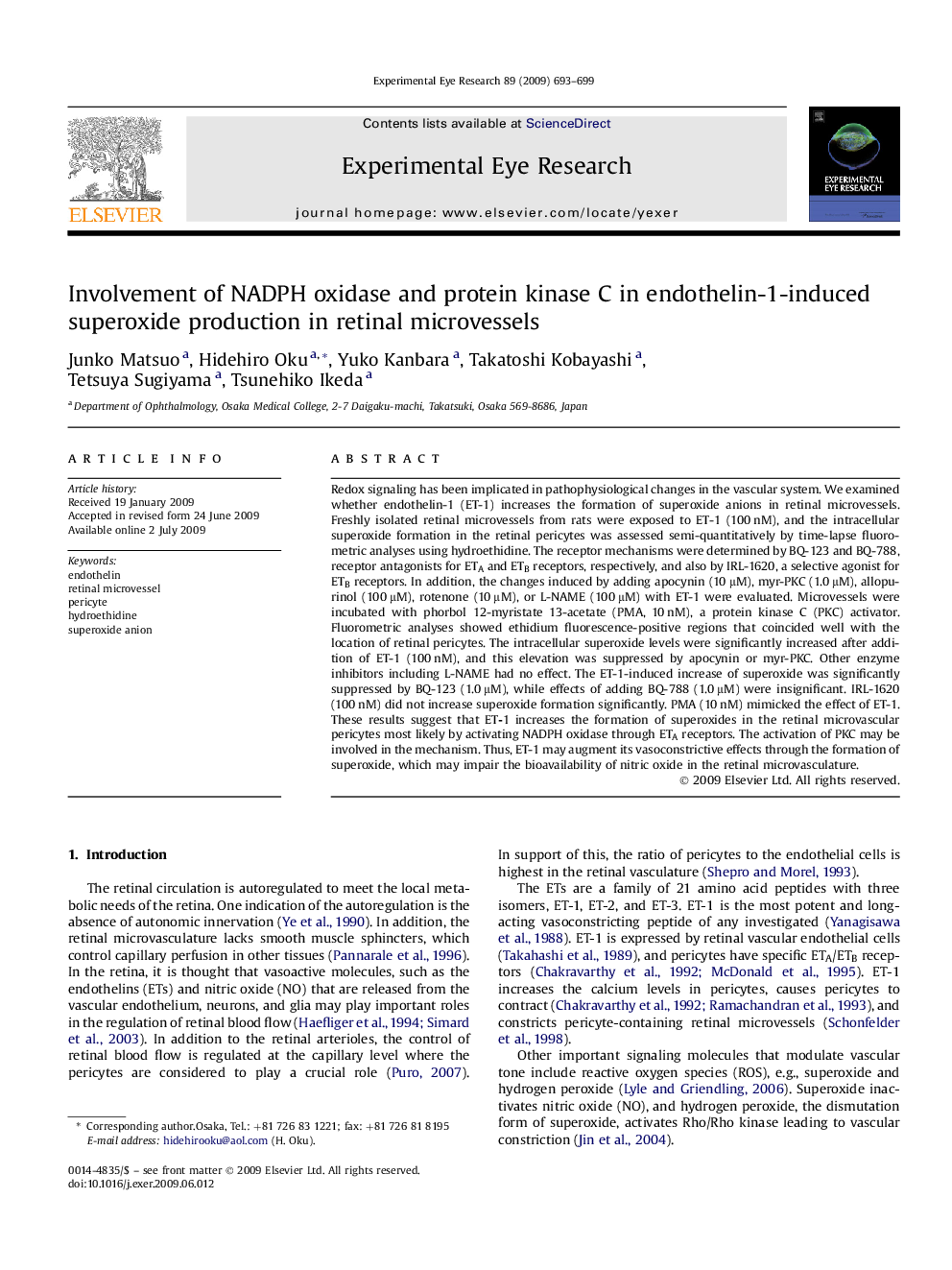| کد مقاله | کد نشریه | سال انتشار | مقاله انگلیسی | نسخه تمام متن |
|---|---|---|---|---|
| 4012137 | 1261180 | 2009 | 7 صفحه PDF | دانلود رایگان |

Redox signaling has been implicated in pathophysiological changes in the vascular system. We examined whether endothelin-1 (ET-1) increases the formation of superoxide anions in retinal microvessels. Freshly isolated retinal microvessels from rats were exposed to ET-1 (100 nM), and the intracellular superoxide formation in the retinal pericytes was assessed semi-quantitatively by time-lapse fluorometric analyses using hydroethidine. The receptor mechanisms were determined by BQ-123 and BQ-788, receptor antagonists for ETA and ETB receptors, respectively, and also by IRL-1620, a selective agonist for ETB receptors. In addition, the changes induced by adding apocynin (10 μM), myr-PKC (1.0 μM), allopurinol (100 μM), rotenone (10 μM), or L-NAME (100 μM) with ET-1 were evaluated. Microvessels were incubated with phorbol 12-myristate 13-acetate (PMA, 10 nM), a protein kinase C (PKC) activator. Fluorometric analyses showed ethidium fluorescence-positive regions that coincided well with the location of retinal pericytes. The intracellular superoxide levels were significantly increased after addition of ET-1 (100 nM), and this elevation was suppressed by apocynin or myr-PKC. Other enzyme inhibitors including L-NAME had no effect. The ET-1-induced increase of superoxide was significantly suppressed by BQ-123 (1.0 μM), while effects of adding BQ-788 (1.0 μM) were insignificant. IRL-1620 (100 nM) did not increase superoxide formation significantly. PMA (10 nM) mimicked the effect of ET-1. These results suggest that ET-1 increases the formation of superoxides in the retinal microvascular pericytes most likely by activating NADPH oxidase through ETA receptors. The activation of PKC may be involved in the mechanism. Thus, ET-1 may augment its vasoconstrictive effects through the formation of superoxide, which may impair the bioavailability of nitric oxide in the retinal microvasculature.
Journal: Experimental Eye Research - Volume 89, Issue 5, November 2009, Pages 693–699